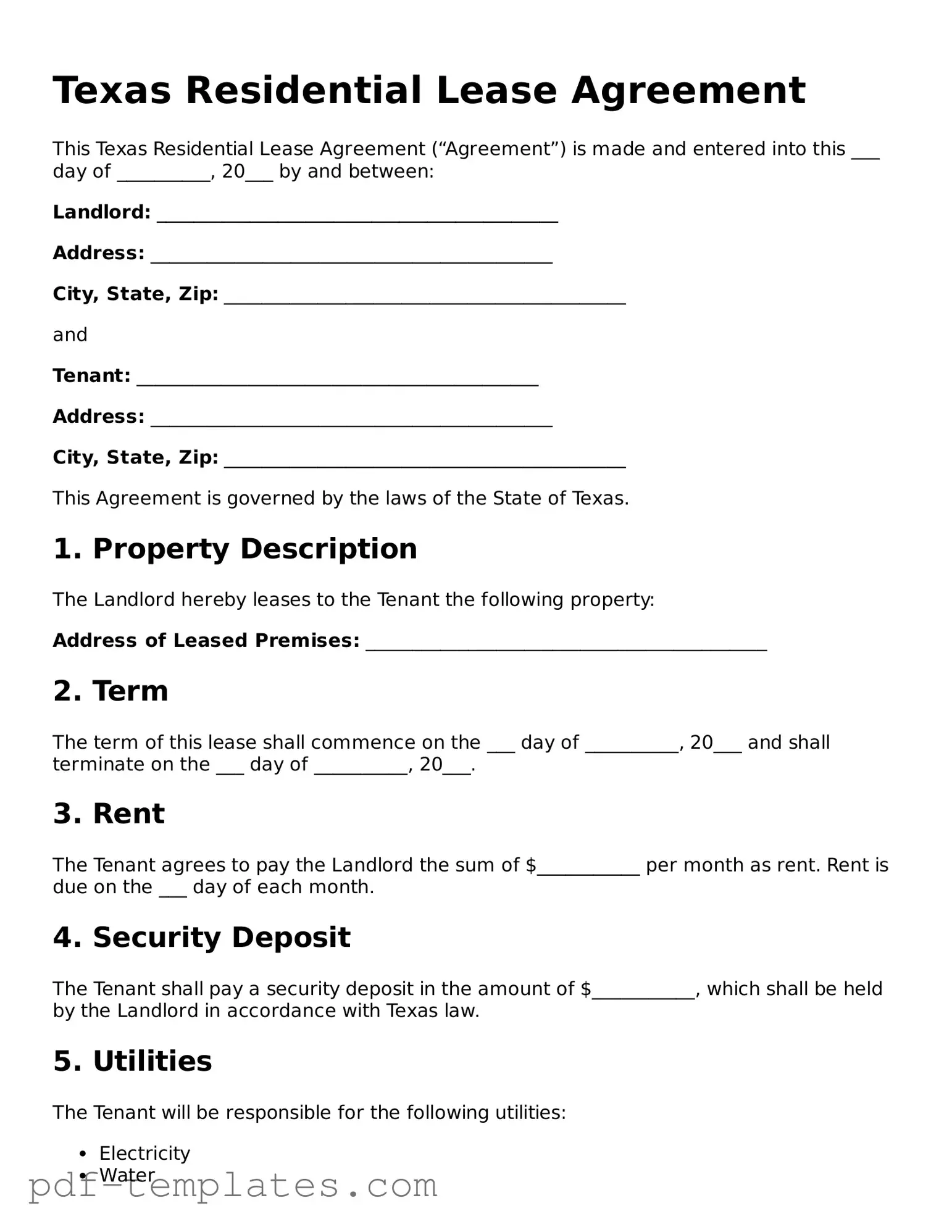The Texas Rental Application is similar to the Texas Residential Lease Agreement in that both documents are essential for establishing a rental relationship. The rental application serves as a preliminary step, allowing landlords to screen potential tenants. It collects personal information, employment history, and rental history, which helps landlords make informed decisions before entering into a lease agreement.
The Texas Lease Termination Notice is another document that shares similarities with the Residential Lease Agreement. While the lease agreement outlines the terms of occupancy, the termination notice provides a formal way to end that agreement. It specifies the notice period required and ensures that both parties are aware of their rights and obligations when concluding the rental arrangement.
The Texas Security Deposit Receipt is also closely related. This document is issued when a tenant pays a security deposit, which is often required as part of the lease agreement. It outlines the amount paid and the conditions under which the deposit may be withheld or returned, ensuring transparency and accountability for both the landlord and tenant.
In California, the rental agreement process begins with a thorough screening of potential tenants, which is where the California Rental Application form plays a crucial role. This document gathers essential details about applicants, ensuring landlords make informed decisions based on credit and rental history. For more information, you can visit https://formcalifornia.com/, where you can find editable templates to facilitate the application process.
The Texas Pet Agreement is relevant as well. If a lease allows pets, this document outlines specific rules regarding pet ownership. It may include pet deposits, restrictions on types of pets, and responsibilities for pet-related damages. This agreement complements the lease by addressing potential issues related to pets in the rental property.
The Texas Lease Addendum is another document that often accompanies the Residential Lease Agreement. An addendum can modify or add specific terms to the original lease, such as changes in rent, additional fees, or new rules. It allows landlords and tenants to customize their agreements while maintaining the integrity of the original lease.
The Texas Notice to Enter is similar in that it governs the landlord's right to access the rental property. This document outlines the circumstances under which a landlord may enter the property, such as for repairs or inspections, and the notice period required. It helps to balance the landlord's need to maintain the property with the tenant's right to privacy.
The Texas Maintenance Request Form is another related document. Tenants use this form to formally request repairs or maintenance issues in the rental unit. While the Residential Lease Agreement may outline the landlord's responsibilities for maintenance, this form provides a clear process for tenants to communicate their needs, ensuring that both parties are aware of their obligations.
The Texas Sublease Agreement is important for tenants who wish to rent out their unit to another party. This document outlines the terms under which a tenant can sublet their rental unit, including any restrictions or requirements set forth in the original lease. It ensures that the landlord's interests are protected while allowing tenants flexibility in managing their living arrangements.
The Texas Roommate Agreement is also similar, especially for tenants sharing a rental property. This document outlines the responsibilities and expectations of each roommate, including rent payments, utility responsibilities, and house rules. It helps to prevent conflicts and ensures that everyone is on the same page regarding their living situation.
Finally, the Texas Move-In/Move-Out Checklist is closely related to the Residential Lease Agreement. This checklist documents the condition of the rental unit at the time of move-in and move-out. It helps to protect both the landlord and tenant by providing a clear record of the property's condition, which can be crucial when determining any deductions from the security deposit at the end of the lease term.
